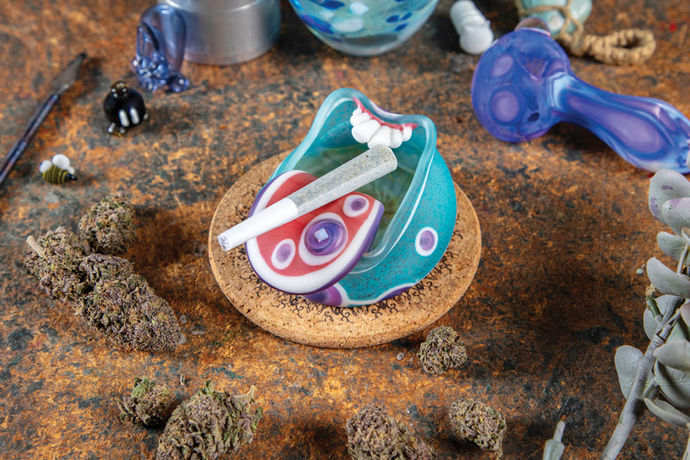In today’s day and age, we are constantly seeing glassblowers push the boundaries of their craft to never-before-seen heights. And alongside these mind-boggling innovations and intricacies, typically comes an eye-popping price tag. But should a single piece command five to six figures? Why does high-end glass art come at such a high cost?
The answer is yes. And the reasons are many.
One & Done
The rarity of glass art being produced today is perhaps the most significant aspect that increases its value. As opposed to a mass-production bong company with dozens of glassblowers producing pieces, many high-end glass artists operate completely on their own. In the same time a production company could make 100 bongs, an individual artist will make one completely unique piece comprised of endless collective hours of work. Because of these time constraints, glass blowers are only able to produce a limited amount of pieces per year – and with the same amount of fans as production companies or even more, that creates a very high demand for a small amount of art.
Highly Specialized
There are dozens of techniques that glassblowers employ when making a piece. These can include sculpting, disk flips, dot implosions, wig wags, cold-working (faceted glass surfaces) and many more. What makes a certain artist’s work sought after is usually a mastery of one or more of these – whether they make the most clean and well-functioning Klein seal, or they have specialized sculpting techniques – all of the skills are extremely difficult and executing them properly is seen as a highly valuable attribute in the eyes of collectors.
Cost of Collaboration
In the process of collaborating with other artists, geography is a significant factor that greatly contributes to the cost. Some of the world’s best glass artists live in Japan and other countries outside the United States, and travel is not always easy. In order for those artists to collaborate with a U.S.-based artist, sections of glass need to be shipped back and forth – which is not only expensive, but risky. Imagine an artist completed their section of a piece and sent it out, only to arrive broken at the other artist’s studio. That sends both glassblowers directly back to square one, with time and materials wasted in the process.
Exclusive Acquisition
Hands down, acquiring one of these pieces is not as easy as one may think. When buying a high-end painting or any other medium of art, would you simply order it online and wait for it to arrive in the mail? No… you would go to that gallery in New York City. You would hit up that artist’s exhibition, no matter where you were in the country or world. With such a diehard group of glass collectors out there, this is your best bet for acquiring glass art that is as exclusive as we see today.
Funds & Function
The materials used in making high-end glass art can be finicky and expensive. When experimenting with new colors, an artist will order a large amount of colored glass rods without knowing if they will react similarly to other colors when put under the flame. For example, a certain color may bubble or be more difficult to work with than others. The rarity of specific glass colors like “rozay” and “lemon drop” also increases as the hype for them grows, and many artists do custom pulls to achieve a desired color unique to their fans like “Deppes Darkness.” When buying a mass-produced piece with coloration, you don’t know if they used materials safe for inhalation, or just a very thin layer of paint (which has happened in the past with these pieces).










